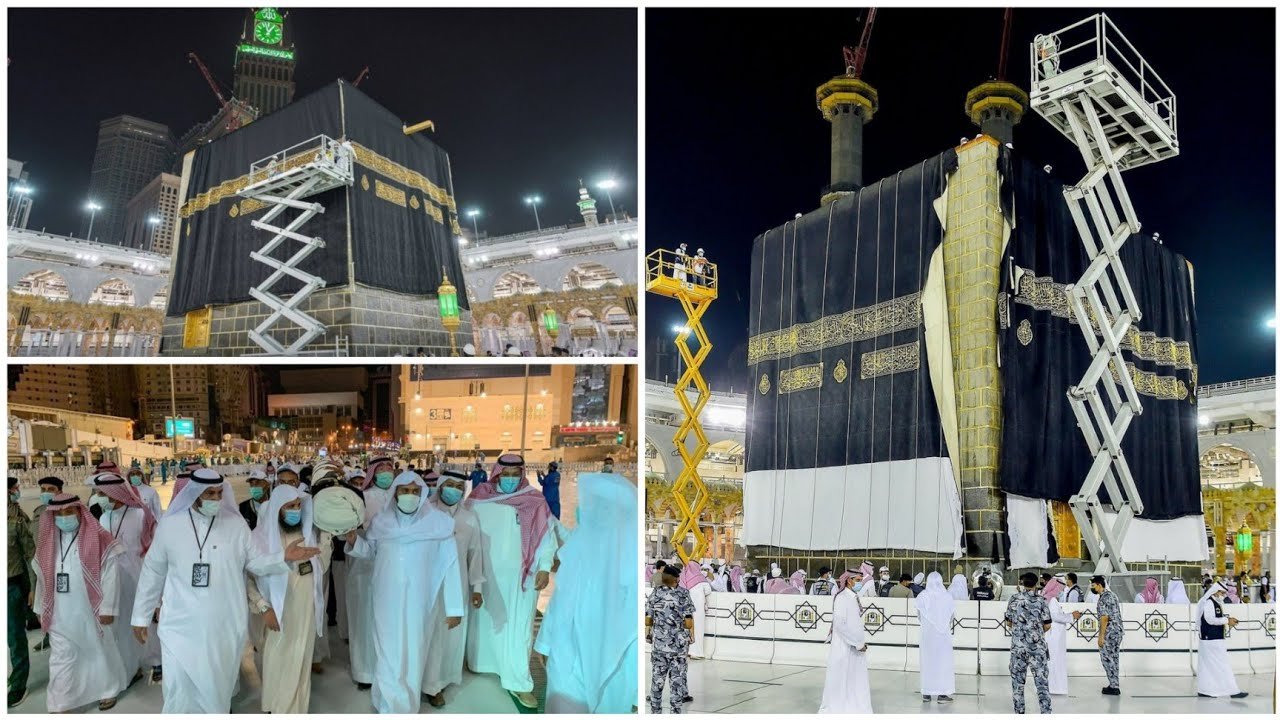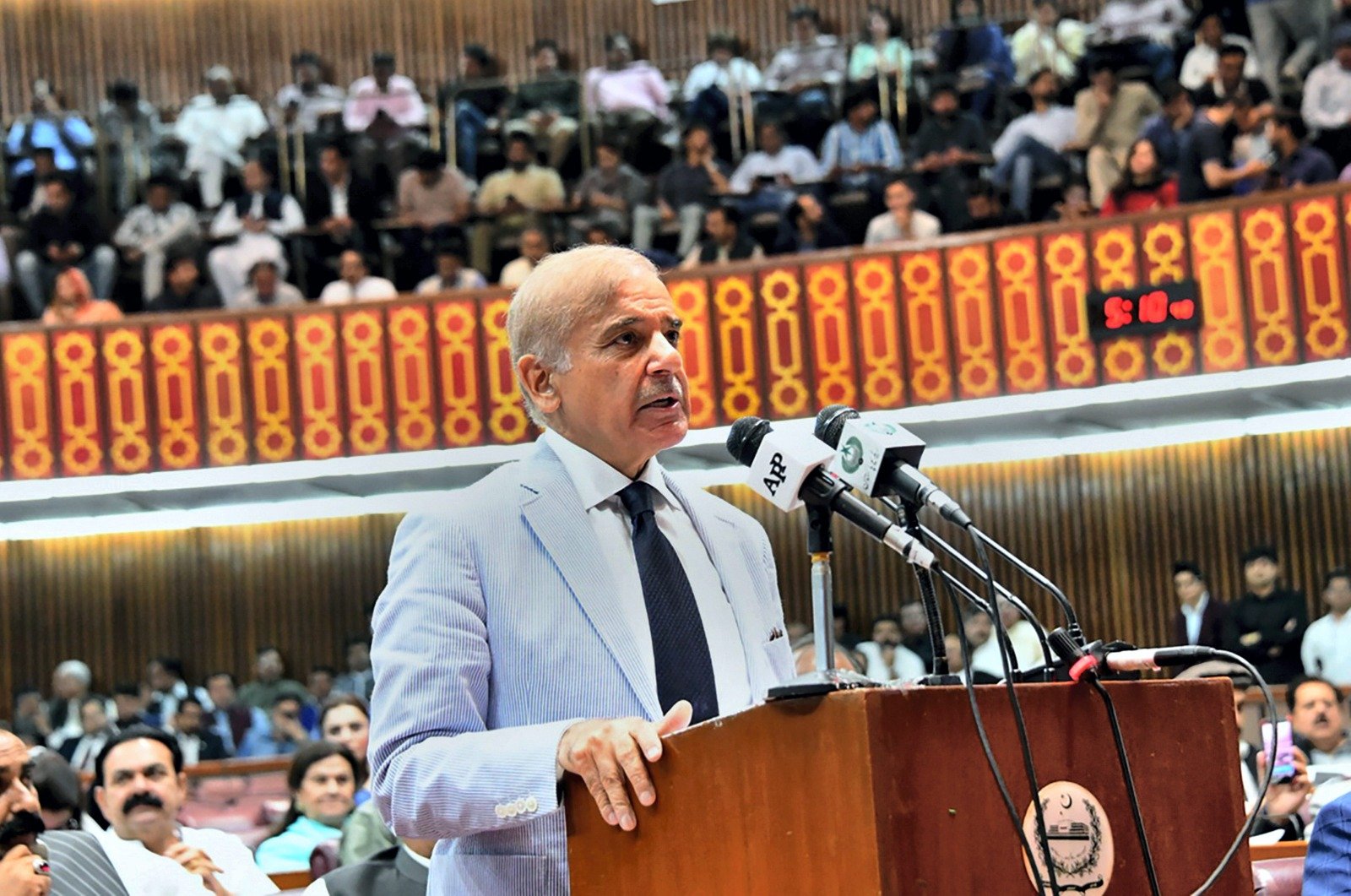Preparations Complete for Changing the Kiswah of the Kaaba on the 1st of Muharram

Saudi authorities have successfully completed all preparations for the annual ritual of changing the Kiswah, the sacred cloth that covers the Kaaba. This ceremony, which takes place on the 1st of Muharram, 1446 AH, marks the beginning of the Islamic New Year and involves a meticulous and reverent process conducted by a dedicated team of experts.
Details of the Kiswah Change:
- Procedure and Duration:
- The process of changing the Kiswah involves removing the old cloth and replacing it with a new one, adorned with intricate embroidery and Quranic inscriptions.
- The changeover takes approximately 3 to 4 hours and is conducted by a team of 159 technical experts and workers.
- **Preparation and Production:
- The new Kiswah is prepared at the King Abdulaziz Complex for the Kiswah of the Kaaba.
- Team Involvement: Over 200 individuals are engaged in the creation of the Kiswah.
- Materials Used: The preparation involves 1,000 kilograms of raw silk, which is dyed black and woven into the cloth.
- Technological Integration:
- The complex houses the world’s largest sewing machine, measuring 16 meters in length and operated by a computer system, used for various tasks related to the Kiswah.
- Jacquard Machines: Modern Jacquard machines are employed to weave Quranic verses, ayahs, and prayers onto the cloth using black silk and threads.
- Adornments:
- The Kiswah requires 120 kilograms of gold and 100 kilograms of silver threads for its intricate embroidery.
- Quality Control: Stringent quality control measures are in place at every stage of the preparation, with laboratory facilities available for material testing.
Significance of the Kiswah:
- Historical Tradition: The changing of the Kiswah is a deeply revered tradition, symbolizing the renewal and purification of the Kaaba.
- Religious Importance: The Kiswah is not only a protective covering but also a profound symbol of the sacredness of the Kaaba, the holiest site in Islam.
- Artistic Craftsmanship: The Kiswah is renowned for its artistic and religious significance, embodying the rich heritage of Islamic art and calligraphy.
Global Impact:
- Pilgrimage and Tourism: The ceremony draws the attention of Muslims worldwide and coincides with the influx of pilgrims for Hajj and Umrah.
- Cultural Heritage: The preparation and changing of the Kiswah is a demonstration of the Kingdom’s commitment to preserving Islamic traditions and cultural heritage.
Expert Opinions:
Religious Scholar:
“The changing of the Kiswah is a significant event in the Islamic calendar, symbolizing renewal and reverence for the holiest site in Islam. It reflects the deep respect and devotion that Muslims have for the Kaaba.”
Cultural Historian:
“The intricate craftsmanship and use of advanced technology in the preparation of the Kiswah highlight the blend of tradition and modernity in Islamic art. The Kiswah stands as a testament to the enduring legacy of Islamic cultural practices.”
Textile Expert:
“The production of the Kiswah involves meticulous attention to detail and quality, ensuring that the cloth not only serves its sacred purpose but also stands as a masterpiece of textile artistry.”
Looking Ahead:
The successful completion of preparations for changing the Kiswah underscores the dedication and precision involved in this annual tradition. As the new Kiswah is placed on the Kaaba, it serves as a reminder of the spiritual and cultural continuity that defines this sacred practice.
The ceremony continues to inspire awe and reverence among Muslims worldwide, reinforcing the sanctity of the Kaaba and the enduring significance of the Kiswah in Islamic tradition.










